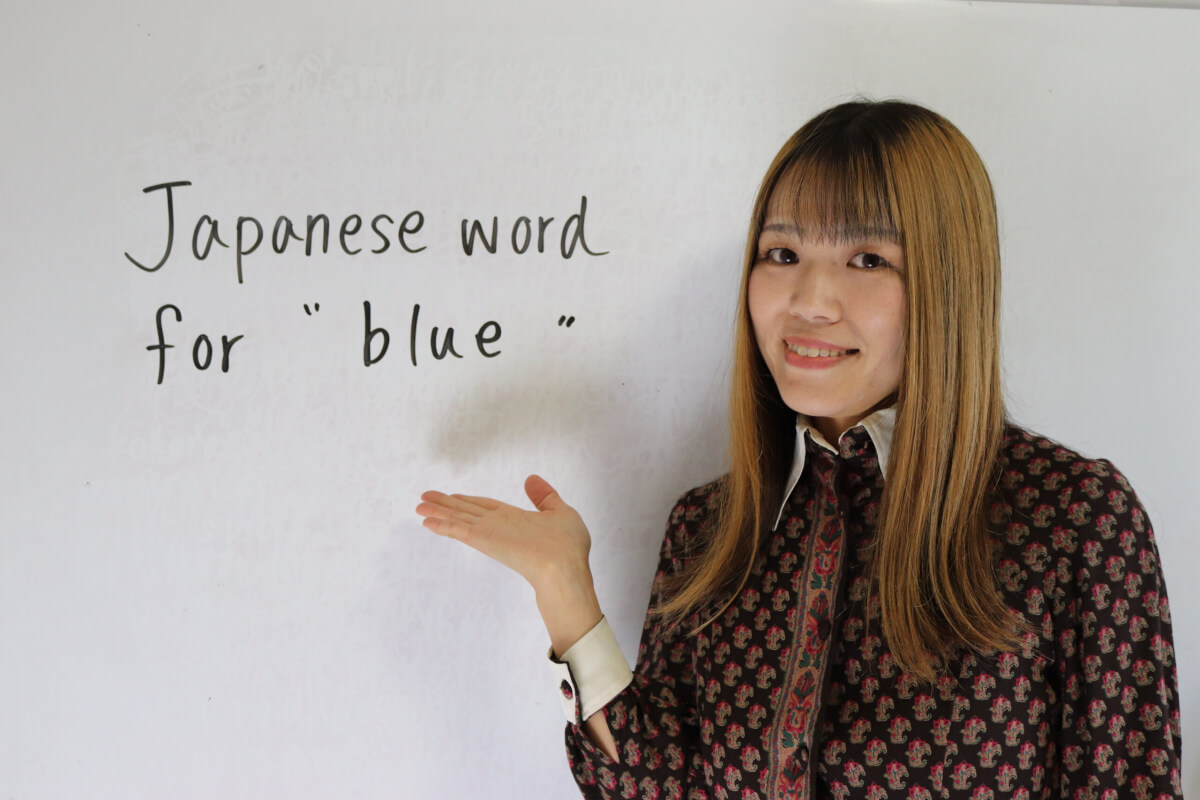- Release Date:
Japanese word for blue

The word for blue in Japanese is 青 (あお /ao/). But in Japanese, the concept of blue, and the word’s grammatical usage, has some unique characteristics. Let’s explore not only the meaning but also how this word functions in sentences.
How to use 青(あお /ao/) as a noun and an adjective

In Japanese, 青(あお /ao/) can function both as a noun and as a い-adjective, with slight changes depending on how it’s used.
As a noun

When used as a noun, 青(あお /ao/ blue) or 青色(あおいろ /ao iro/ blue color) refers to the color blue itself.
- 空の青が美しい 。(そらのあおがうつくしい /sora no ao ga utsukushii/): The blue of the sky is beautiful.
- 青色が好きです。(あおいろがすきです /ao iro ga sukidesu/): I like blue color.
As an い-adjective
When 青(あお /ao/) is used as an い/i/-adjective, it becomes 青い (あおい /aoi/), meaning “blue” when describing something directly.
- 青い空 (あおいそら /aoi sora/): blue sky
Notice how 青い(あおい /aoi/) directly modifies the noun. It’s important to recognize that in Japanese, adjectives like 青い(あおい /aoi/) always come before the noun they describe, unlike in English where adjectives can sometimes follow.
As an い /i/-adjective sentences
Japanese い /i/-adjective sentences are conjugated in this way.
| "Blue" | Affirmative sentence | Negative sentence |
|---|---|---|
| Present tense | 青い (あおい /aoi/): It's blue. ex)海が青い (うみがあおい /umi ga aoi/): The sea is blue. | 青くない (あおくない /aoku nai/): It's not blue. ex)この花は青くない (このはなはあおくない /kono hana wa aoku nai/): This flower is not blue. |
| Past tense | 青かった (あおかった /aokatta/): It was blue. ex)昨日の空は青かった (きのうのそらはあおかった /kinou no sora wa aokatta/): Yesterday’s sky was blue. | 青くなかった (あおくなかった /aoku nakatta/): It was not blue. ex)先週の海は青くなかった (せんしゅうのうみはあおくなかった /senshū no umi wa aoku nakatta/): The sea was not blue last week. |
As an い /i/-adjective, 青い follows these common patterns that apply to all adjectives in this group.
Is 青(あお /ao/) blue or green?
Japanese historically didn’t have distinct words for blue and green. This is why "青(あお /ao/)" can refer to both blue and green in certain contexts. For example:
- 青信号 (あおしんごう /ao shingou/): The "blue" traffic light, which we would call green in English.
- 青リンゴ (あおリンゴ /ao ringo/): a green apple
In these cases, the word "青(あお /ao/)" retains a broader meaning, reflecting an older cultural perspective where blue and green were seen as variations of the same color.
青(あお /ao/) vs. ブルー (/buru-/)
Japanese also uses ブルー (/buru-/), a Katakana borrowing from English, to describe blue in modern contexts. This borrowed word is often used in fashion, technology, or media:
- ブルージーンズ (/buru-ji-nzu/): Blue jeans.
- ブルースカイ (/buru- sukai/): Blue sky (used poetically or for effect).
While both 青(あお /ao/) and ブルー(/buru-/) can mean "blue," 青(あお /ao/) is the more traditional and versatile word. ブルー(/buru-/), on the other hand, is more specialized for contexts where foreign influence is felt.
Shades of 青(あお /ao/)
Japanese has specific terms for various shades of blue, just like in English. Some common variations include:
- 水色 (みずいろ /mizuiro/): light blue, literally “water color.”
- 紺色 (こんいろ /kon iro/): navy blue
- 空色 (そらいろ /sorairo/): sky blue
Each of these terms evokes a different feeling and image, much like the subtle variations in color we notice in daily life.
